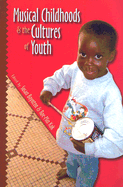This turn out to be a beautiful misunderstanding. Look at this:
The powerful and almost disturbing (in the Classical sense) Sonata in C minor, one of only two piano sonatas in the minor mode by mozart, starts with an upward octave gesture in forte. Angry, solemn, masculine, or in some musical jargons, the Ratnerian topic of military/ horn call, or the Mannheim rocket. Measures 3 and 4 answers with piano. being sorrowful, docile, feminine, or an Nietzschean Angst, if you will. The first four bars constitutes what we call the antecedent phrase (the first in a question-answer pair), and the following four the consequent.
Here's how I heard it played by a person of undisclosed name a few days ago, and also an ex-colleague a few months ago, as well as in the first video search result on Youtube when I typed "Mozart Sonata in C minor":
As if it is a plague, numerous people apply the pedal at the second beat of the second bar, prolonging the E-flat until momentarily before the next E-flat played by the right hand.
They also apply a diminuendo from bar 3 to four, partly, rendering the antecedent and consequent phrases totally symmetrical.
There are a few rebuttals for the above interpretation. What Malcolm Bilson preached in his DVD Knowing the Score would forbidden us from applying the pedal at measure two, and I concur totally. Firstly, applying the pedal shortens the silence after the note. The drama of silence conveyed by the rests is one of the things I am looking for. The upward thrust ends "untimely" at E-flat, as if it should have gone up infinitely. The abrupt stop causes silence and question, and the rhetoric continues by picking up the high E-flat as a start of the feminine gesture. Applying the pedal creates what I call a plateau at E-flat, and it may sound like a legitimate emotional linkage between the agitated octaves and the languous melody afterward. This plays with elegance (which is not the character of this passage) and buries musical surprise.
The dampers of the modern steel piano truncates sounds very well, but in a good concert hall or practice room, the resonance during the rest is still evident. In Mozart's piano, the dampers are less efficient, and the resonance constitute part of the musical excitement. I believe this intention is naturally translated well from a Mozartean piano to a Steinway or Yamaha.
Now, take a look at the harmonies:
Measure three to four suggest, harmonically, a crescendo, as the diminished chord at measure 4 is more dissonant than the first inversion tonic chord at measure 3. it makes no sense to play measure 3 louder, and let the music "resolve" to measure 4. The resolution is non-existent. I certainly admire the slight imbalance between the antecedent and consequent phrases more than a dogmatic balanced elegance within the eight bars. This decision based on harmony is very suitable on a fortepiano. But does it translate well on a modern piano? Not necessarily. Therefore, I would do the following:
As a pianist with some talent but far from a natural player, I think about music often with great complexities, however aim at having it sound simple and natural. My markings may look complicated, but I think you will understand my intentions.
Interestingly, this sonata was written before most, if not all Beethoven compositions. There is, however, the vigor that is often associated with Beethoven. Also notice the orchestral effect imitated on the piano (tutti/ strings for mm. 1-2, woodwinds for mm. 3-4). Although he wrote the most elegant and tuneful melodies in the history of music, Mozart is neither a transcendental being who only writes angelic music, nor is all his music suitable for shopping malls or the Mozart Effect compilation.
The dampers of the modern steel piano truncates sounds very well, but in a good concert hall or practice room, the resonance during the rest is still evident. In Mozart's piano, the dampers are less efficient, and the resonance constitute part of the musical excitement. I believe this intention is naturally translated well from a Mozartean piano to a Steinway or Yamaha.
Now, take a look at the harmonies:
Measure three to four suggest, harmonically, a crescendo, as the diminished chord at measure 4 is more dissonant than the first inversion tonic chord at measure 3. it makes no sense to play measure 3 louder, and let the music "resolve" to measure 4. The resolution is non-existent. I certainly admire the slight imbalance between the antecedent and consequent phrases more than a dogmatic balanced elegance within the eight bars. This decision based on harmony is very suitable on a fortepiano. But does it translate well on a modern piano? Not necessarily. Therefore, I would do the following:
As a pianist with some talent but far from a natural player, I think about music often with great complexities, however aim at having it sound simple and natural. My markings may look complicated, but I think you will understand my intentions.
Interestingly, this sonata was written before most, if not all Beethoven compositions. There is, however, the vigor that is often associated with Beethoven. Also notice the orchestral effect imitated on the piano (tutti/ strings for mm. 1-2, woodwinds for mm. 3-4). Although he wrote the most elegant and tuneful melodies in the history of music, Mozart is neither a transcendental being who only writes angelic music, nor is all his music suitable for shopping malls or the Mozart Effect compilation.





